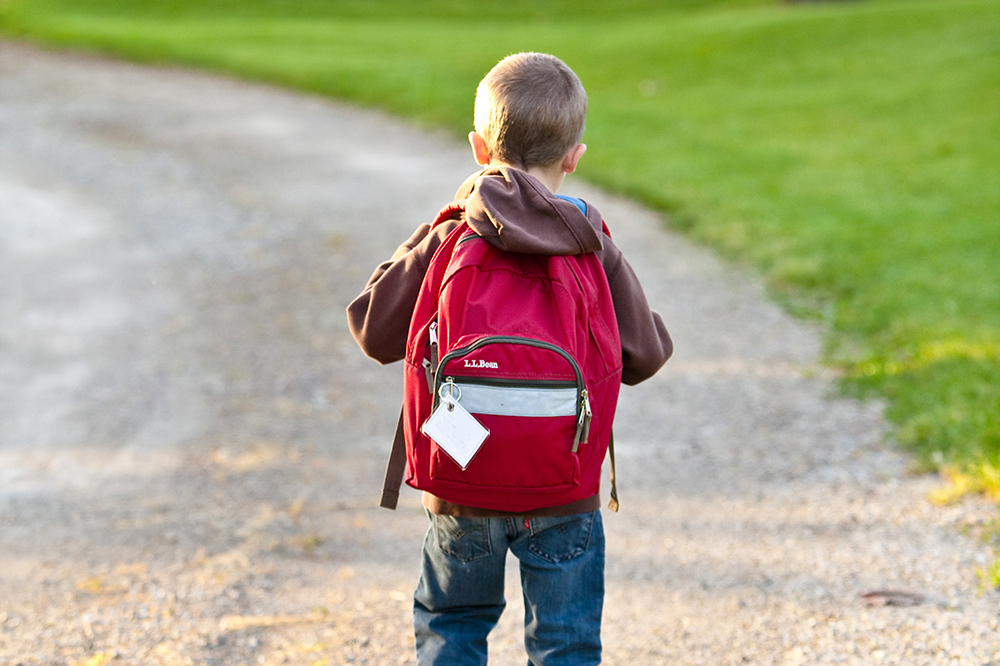Loudoun County, Va. — With the 2017-2018 school year starting less than a week ago, you might still be in need of a backpack along with a laundry list of items on your child’s back-to-school supply list. While narrowing down the essentials, budgeting and trying to appease your little ones’ ever-changing fashion preferences, it’s easy to overlook important matters such as finding an ergonomically friendly backpack.
Unfortunately, the incidence of backpack-related injuries continues to climb each year as kids get overloaded with homework and transport multiple textbooks, notebooks and binders to and from school each day. School-aged children and teens often report instances of pain, and parents often dismiss complaints, citing “growing pains.” However, when the problem gets severe enough, school-aged children often come to physical therapy because of chronic back pain. The good news is most back pain is easily preventable by implementing the following tips.
Backpack Ergonomics
The first steps in injury prevention for students are employing good body mechanics, using proper posture while sitting in class and practicing backpack ergonomics.
Conventional backpacks refute the goals of ergonomics solely based on design. Generally speaking, backpacks are posterior loading, meaning they throw off one’s center of gravity by overloading the posterior half of your body. Over time, this leads to postural dysfunction. As the weight on your child’s backpack increases, the more forward rounded his or her posture becomes to compensate for the heavier load. The heavier the load, the more stress your son or daughter will have through his or her spine, increasing the chances of developing chronic back pain if the underlying issue of postural distortion is not addressed.
Since heavy bags cause compensation, make sure your child wears his or her backpack on both shoulders. Carrying a backpack slung over only one shoulder will cause muscles to strain to compensate for the uneven weight distribution.
Backpack Weight
To further eliminate the chances of unilateral compensations, distribute the weight of your child’s backpack by dispersing items in multiple pockets throughout the bag instead of using only one compartment.
Limiting the total weight of the bag to less than 10 pounds, using the cross-chest strap for added support (if the backpack has one), and wearing the backpack higher with both straps tightly secure will reduce the bag’s weight from the hips closer to the wearer’s center of gravity. Ultimately, this lowers the stress on the spine, improves weight distribution and increases musculoskeletal balance, decreasing the likelihood of injury.
Seating Posture
Postural distortion also results from poor seated posture, such as sitting hunched over while in class, studying, reading, watching television or playing video games. The youth of today are less physically active, and the longer amount of time spent sitting leads to an increase in excessive kyphosis, or a forward rounded spine. This is an important issue to nip in the bud during adolescence while children are still growing so they do not develop spinal abnormalities or long-term postural deficiencies.
Teach your child how to sit up straight by elongating through the spine, gently pulling their shoulders down and back, and evenly distributing their body weight on both hips by avoiding crossed legs or shifting their weight onto one side. This encourages better posture and will reduce the instances of one-sided muscles strains.
Body Mechanics
Body mechanics are vital as students return to school, falls sports and juggle numerous after-school activities. Whether your child is starting kindergarten or moving into college, keep these lifting techniques in mind to prevent a lower back injury.
One of the major causes of low back pain is repetitive injury to the spine. Repetitive injuries can be as simple as bending down to pick up your backpack, a pile of books, sports equipment or lifting moving boxes.
To bend and lift properly, use the following techniques to keep you from sidelining yourself with a back injury:
- Spread your feet wider than hip-width apart to give yourself a wide base of support.
- Stand as close as possible to the object(s) you are lifting.
- Bend at your knees, not at your waist or back.
- Tighten your stomach muscles as you lift the object up.
- Hold the object as close to your body as you can.
- Slowly lift, using your muscles in your hips and knees.
- As you stand up with the object, do not bend forward.
- Do not twist your back while you bend to reach the object, lift the object, or carry the object.
- Squat as you set the object down, tightening the muscles in your abdominals, knees and hips, still keeping the object as close as possible to your center of gravity.
- If the object you are lifting is too heavy to lift without straining your back, get additional help to lift or move that object.
Take care of your back and it will serve you well for years to come.
Note from our sponsor: Click here to schedule your FREE ASSESSMENT with Loudoun Sports Therapy Center. Our expert physical therapists can evaluate your condition and help you get back to normal!



